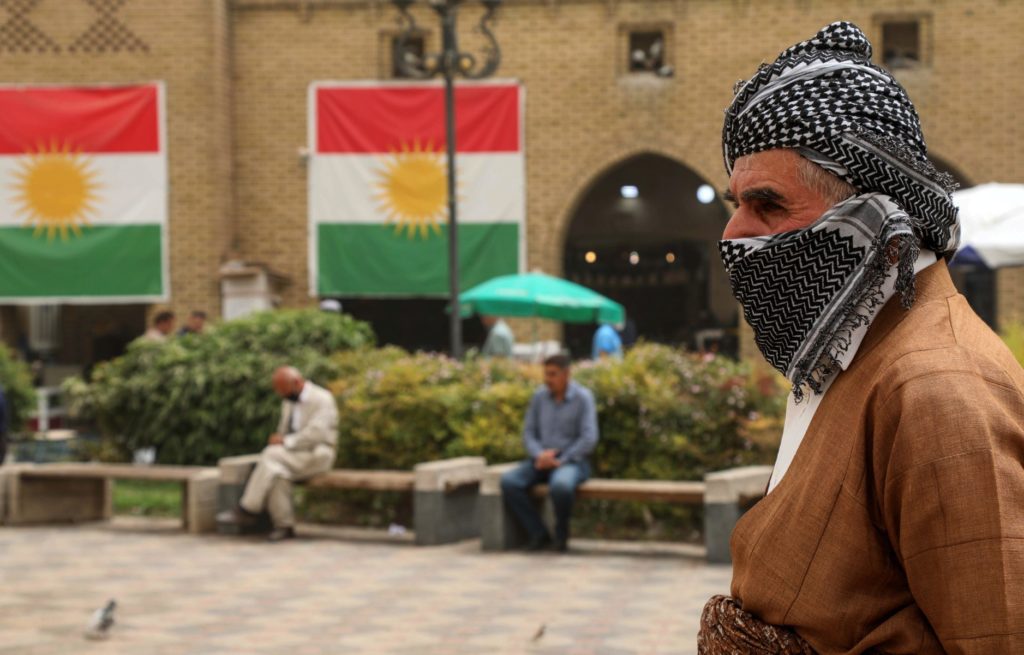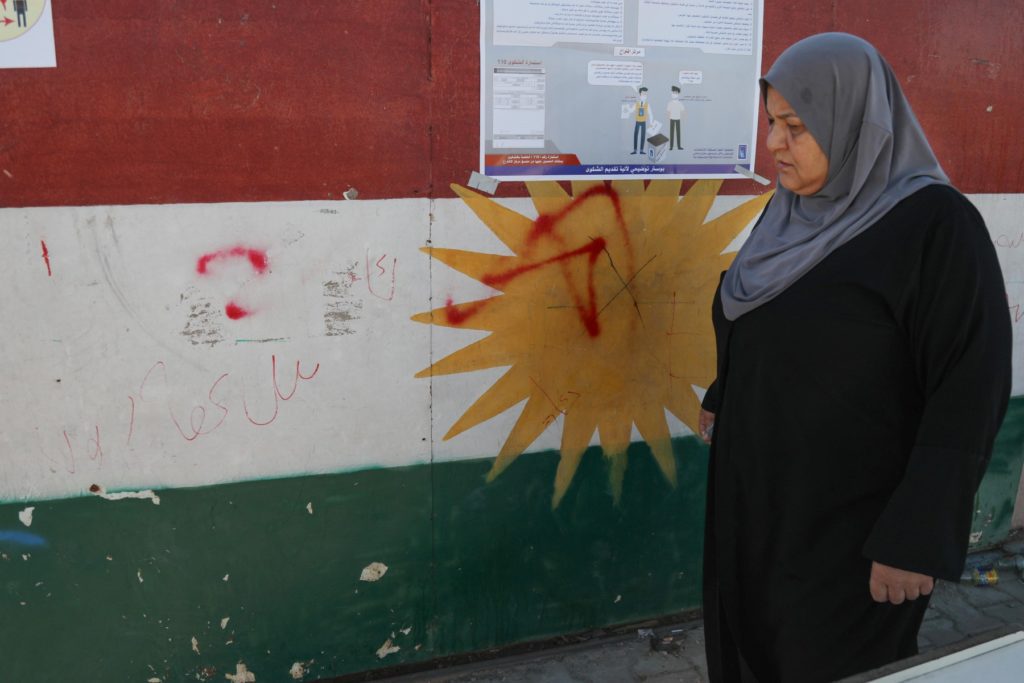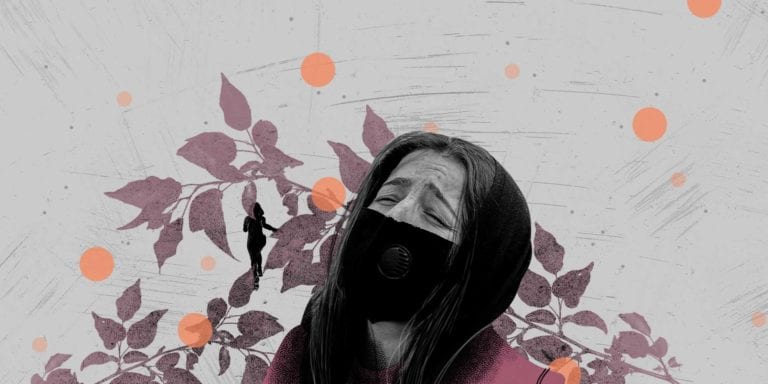In Qamishli, Turkey is omnipresent. In the northern neighbourhoods of this town, one sees the buildings of Nusaybin, on the other side of the border, recently separated by a long wall overlooked by border guards and military posts. At night, travelling on the highway and one sees the Turkish side clearly, illuminated by bright streetlights. The river Jaghjagh that divides Qamishli is a horribly smelling dark fluid, and my guide explains that Turkey has cut its fresh water, releasing only used municipal waters. The border crossing in the northern part of the town is under the control of Syrian soldiers loyal to President Bashar Asad, and it remains closed from the Turkish side.
The major preoccupation in this Kurdish dominated “Autonomous Administration of North and East Syria” is security: Turkish drones regularly make raids, and threats are continuous for further military operations against Kurdish militants that Turkey considers to be the prolongation of the Kurdistan Workers Party, or the PKK.
The Autonomous Administration is one of the more stable and prosperous regions in this tragic land that is Syria. It came under Kurdish armed groups following the Syrian uprising, and the withdrawal of the Syrian regime forces. It was the second half of 2011, the Syrian uprising developing with force, and the Asad regime wanted to withdraw from Kurdish areas and wanted to pass the control of the region to local Kurdish groups, tells me Ahmad Suleiman, a leader of the Democratic Peace Party of Kurdistan. Yet, Kurdish forces in Syria thought at that time that Asad would fall in few months and refused to negotiate with him. The void was filled when PKK militants came from the Iraqi mountains and succeeded to take control. Among them was Mazloum Abdi, the current military leader in north-east Syria. They established the “People’s Defence Units” or YPG militia, while the political control went to the Democratic Union Party (PYD), a political formation inspired by PKK and its leader Abdullah Ocalan.

It was at the height of the Battle of Kobane (2014) when YPG found fierce battles against the Islamic State (ISIS) which created conditions of the military alliance between the Kurdish fighters, and the US military. It was then that the US abandoned the “Free Syrian Army” and made a military alliance with the YPG. Kobane was the first military victory against ISIS, a force that threatened regional and international security. This alliance went further when the US asked the Kurdish fighters to become the foot soldiers in the fight against ISIS to liberate Raqqa – the capital of the “khalifate” – Der Ez-Zor, and until the last stand of ISIS in Baghuz. Those were no more Kurdish but Arab inhabited regions. An alliance of Kurdish-Arab forces was formed under US umbrella, known as the “Syrian Democratic Forces” (SDF), which today rules over an area of 50’000 km2, with a population of three million inhabitants, the majority of whom are ethnic Arabs. While Kurdish forces initially coined the term “Rojava” or “southern Kurdistan” to name the new political entity, they name it now the more neutral “North and East Syria”. In this way, the second Kurdish autonomy was formed in the Middle East.
The region of Jazeera (or “island”, a region between Euphrates and Tigris Rivers), is the breadbasket of Syria. It also dominates over 90% of Syrian oil and half its gas reserves. This might be one of the many reasons why the Asad regime does not accept to enter any kind of political discussions with the Autonomous Region. Clearly, the northeast is part of “useful Syria” that the regime wants to regain, as it used to be an important source to fill the state coffers.
As we pass next to regime checkpoints in the centre of the city, my driver cautions not to film, as we risk being stopped and interrogated. The Syrian regime still has presence in Qamishli, preserving some government buildings there known as “security square”. The Qamishli airport, just to the south-west of the city, is also under regime control. The relationship between the Kurdish forces and regime loyalists are not always easy. In April 2022, the SDF imposed a blockade around regime forces and took some buildings from them, in return for regime blockade against Kurdish majority suburb of Sheikh Maqsud in Aleppo.
“There are no negotiations with Damascus” tells me Abdulkarim Omar, the de facto foreign minister of the Autonomous Administration, “only contacts through Russian mediators. The regime still thinks as if it is 2011, they want to reproduce once again their total hegemony.”
Foreign Troops: Russians and Americans
What is the future of the “Autonomous Administration” squeezed between the regime forces in the south, and a hostile Turkey in the north? For the moment, the region enjoys American protection, as some 900 US troops remain after former US president Donal Trump ordered troop withdrawal. They are spread around the area in numerous bases and regularly patrolling its main roads. But there are also Russian troops stationed in the region, like the small base I saw in the town of Amuda. Yet, Turkish leaders have repeated their plans to create a 30km deep security zone inside northern Syria and have already attacked and occupied a large band stretching from Afrin to Ras ul-Ayn. If the Americans remain, it seems that Turkish military activities will be limited to occasional airstrikes against Kurdish militants.


But what will happen to the Autonomous Administration when the Americans leave? “We never cut our relations with Russia, in spite of our military alliance with the US” says Abdulkarim Omar. “Russian military presence is symbolic” yet important, he reminds me. Now with the war in Ukraine, Russian presence in Syria is weakened, and at any case it is the US that provides the security umbrella for North-East Syria.
Kurdish politicians in Qamishli can be divided into two groups. There are those who think that the final objective of Turkey is to eliminate the presence of an organized Kurdish political unit in northern Syria. They remind us in their conversations the fate of Afrin, the westernmost Kurdish populated area in Syria, which was attacked by the Turkish army and occupied in early 2018. According to them, now only 20% of the original Kurdish population remain there from an original 97% of ethnic Kurds, the rest were forced to seek refuge fleeing the exactions of the Islamist groups. This was followed by a second attack on Ras ul-Ayn and Tal-Abyad. With such a vision, it is difficult to imagine anything other than an existential struggle.
“Turkish demand is consistent, they want to go as far as Raqqa” tells me Saleh Muslim, the former co-Chair of PYD. We are sitting in an old vacation complex, next to a current American air base, where our discussion is interrupted by the noise of helicopters. His view on the relations between the Autonomous Administration and Turkey is bleak. Yet, from 2013 to 2015 he visited Istanbul three times to negotiate with the Turkish leadership. This fact nuances existential fears and makes the political a possibility. In 2013, there was a cease-fire agreement between the Turkish army and Kurdish guerrillas of PKK, and political discussions between Ankara and the PKK leadership. This reflected positively on the Kurds in Syria and Turkey. Then, what went wrong?
“The battle of Kobane was the breaking point,” tells me Saleh Muslim. “Even during the battle, we had contacts with Turkey. The contacts stopped after ISIS was defeated. Their project was that ISIS would occupy Kobane and open the way to Turkish intervention so that they take over a band in northern Syria, just like they did in Jarablus.” With renewed conversation in Turkey of sending a million and a half of Syrian refugees to northern Syria, Saleh Muslim says that “Turkey now is realizing the project of ‘Arab belt’ in north Syria” a Baath era project of bringing ethnic Arab settlers in Kurdish majority regions, as part of “Arabization” policies.
Naser Haj Mansour is the director of the Syrian Centre for Research and Dialogue. He is aware of the Kurdish-Turkish relations, and the way Kurdish leadership thinks. “In the last years the idea of a united Kurdistan started eroding,” he tells me in his office in Qamishli, “this made Kurdish leaders more realistic about possible political changes within the state they are living in.” He says that today there is a paradoxical situation in North-East Syria: it is under Kurdish political and military domination, but the region today is populated by Arab majority. “The Kurds will not achieve an independent state [in Syria] but let us think how to achieve stability instead of continuous warfare.” Then he adds a surprising note: “PKK leaders are saying: if Turkey solves the Kurdish problem, it will become the dominant force in the entire Middle East.” But the question remains: “is Turkey ready to give anything to the Kurds, or not?”
The ISIS attack on Hassakah prison, that started on January 20 and lasted for ten days, once again reminded of the dangers in the eastern desert of Syria. The price paid was heavy: 154 SDF fighters, most of them prison guards, were killed in the attack, as well as several hundreds of ISIS attackers and prisoners. Yet, politically this attack reinforced the importance of Kurdish led-SDF in the eyes of Western powers, and the US on its head.
For the moment, neither political dialogue is taking place between the Autonomous Administration and the two major forces around it – Damascus and Ankara – nor the “great powers” like the US and Russia are in a state that permits them anything other than coexistence in a divided and ruined country. As politics remains unable to solve those vast problems, the space is left to military operations, attacks and counter attacks as the only alternative to fill the lost time.
Read Also:







